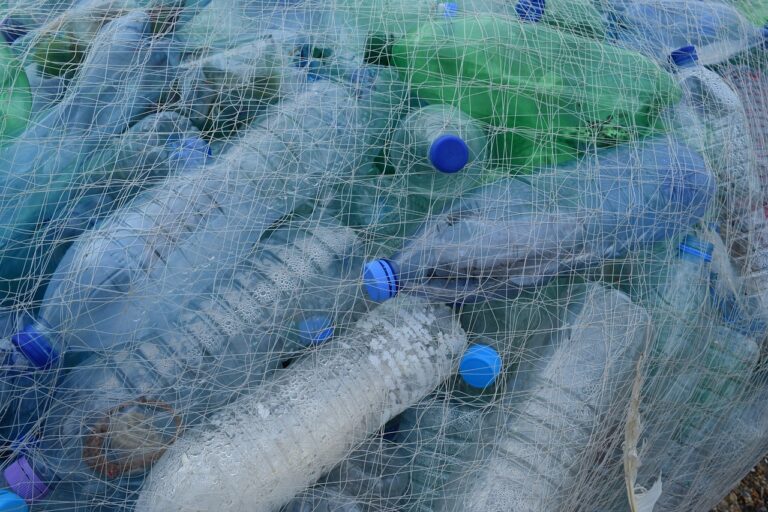Microplastics are tiny pieces of plastic that have been broken down from larger pieces. They’re in many products, including clothing and cosmetics.
They can also come from the breakdown of waste like plastic bags or bottles, which can be carried by water into rivers and oceans and then break down into microplastics over time.
Microplastics are often smaller than 5 millimeters (0.2 inches) in diameter. They can come from various sources, including natural materials like sand and dust that get broken down by sunlight into tiny particles.
Table of Contents
How do microplastics get into the food chain?
There are three main ways in which microplastics get into the food chain:
- through food packaging: microplastics can be found in a wide range of food packaging, including plastic bottles and coffee cups. They are also found in some facial cleansers, toothpaste and shower gel brands. This is because many products contain tiny plastic beads that act as exfoliants or abrasives. They are added to make the product work better but are washed down the sink when you use them;
- in the air from microbeads in facial scrubs and toothpaste. The tiny plastic beads bounce off your skin when you rinse off with water and then go straight into the wastewater system where they collect at sewage treatment works before being discharged into rivers or oceans;
- in seafood caught near coastlines where there is pollution from urban areas or industrial sites such as oil rigs or fishing vessels.
Microplastics are found everywhere and they are in everything
In oceans, rivers, lakes, and streams: microplastic fibers have been found in fish stomachs and on the sea floor. In soil samples taken from around the world: microplastic particles have been detected at concentrations of up to 17 million pieces per square kilometer.
A study determined that over 300 species of insects (bees included) ingest microfibers when they fly through polluted air. This may lead them to forage for food less selectively than usual, resulting in malnourishment or starvation if their diets do not include enough nutrients from other sources like pollen or nectar—or even worse.
It may mean that bees avoid eating altogether because they don’t want to ingest more particles with each bite. This could be bad news for bee populations that already face threats from pesticides like neonicotinoids.
A recent study showed that almost all tap water tested across Europe contains some form of microplastic pollution.
Are microplastics harmful to human health?
The answer is not clear. It is well established that microplastics can enter the human food chain, but we know very little about their effects on health.
Studies have shown that tiny plastic particles can transfer from contaminated water or air into the body via breathing and eating. Once inside the body, they can be transported to the liver, kidneys, and spleen – or absorbed by fat tissue in our bodies. A large number of these particles may cause inflammation and increase the risk of bowel disease if ingested over time.
There are also concerns about toxicity. Certain types of microplastic could cause harm when ingested by animals if they contain BPA (bisphenol A). Although this has not been proven yet with humans consuming them directly from plastic bottles or containers. It’s still possible that if you eat food cooked with heated oil containing BPA-laced containers, your health could be affected.
What’s being done about microplastics?
The Environmental Protection Agency (EPA) is actively researching the effects of microplastics on human health. It released a report in 2016 summarizing the current state of knowledge. The EPA has also launched an outreach campaign that emphasizes reducing plastic waste.
In addition, initiatives are underway to reduce the amount of plastic in waterways and oceans. The Ocean Cleanup is developing a system to clean up ocean debris. In 2018 it launched its first operational cleanup system in the North Sea.
Meanwhile, scientists are working on ways to prevent microplastic from entering the environment. Researchers have developed biodegradable plastics that can break down into harmless components when exposed to ultraviolet light or naturally occurring microbes.
The message is clear: microplastics is a growing problem
You may have heard that microplastics are everywhere. It’s true, they’re in the air, water, and soil, as well as in the food we eat.
Microplastic pollution is a growing problem due to its widespread presence in our natural systems and its ability to persist for centuries. There’s also evidence that microplastics can be transported long distances from origin through wind-borne dust or ocean currents.












